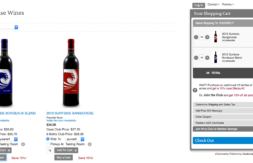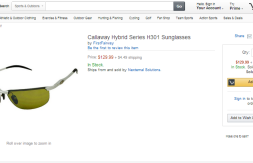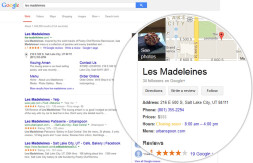Hollywood 101: Guide to Viral Video Creation
All too often the words “video production” are associated with expertise only found in Hollywood, cumbersome equipment, large crews and, of course, immense sums of money. However, today’s technology allows everyone – from parents who want to make presentations of family home videos, to filmmakers shooting in conditions that only allow for small crews and rugged, portable equipment – to capture beautiful images and edit them into powerful visual media. The proliferation of video on the Internet, supported by websites such as Hulu, Vimeo, Daily Motion and the ever-popular YouTube, means that videos can reach wider client bases than ever before. Creating a great video for your company doesn’t always require hiring outside professionals or buying expensive equipment; with careful research, planning and budgeting, even the smallest businesses can update their website content without breaking the bank. This entry will give an outline for a common approach to video production, but keep in mind that every production – even those in Hollywood – takes on a life of their own. Allow for flexibility and, most of all, creativity and fun!
Step 1: Script Your Production
All productions, even documentaries, have a narrative. Put simply, they have a beginning, middle and end. Be sure to inform audiences why they are viewing your company’s video immediately. Internet users spend less than one minute viewing a website while surfing, however, most adults can view a 2-hour film with only minimal lapses of attention. Video content will convince web users to spend more time on a particular site, but only if they are quickly engaged.
Many companies have a carefully honed marketing message, however, more work may need to be done to distill it into video content. The average online video duration is about 2.7 minutes – and the average Super Bowl commercial is only 31.69 seconds! The absolute longest any single piece of video content should be is 4 – 5 minutes. When writing, read the script out loud (slowly) and time it. You may be surprised to find how long your “short” may actually be.
When shooting video testimonials, offer speakers specific talking points to hit when they are on-camera. Many speakers have trouble imparting the candid, genuine tone of documentaries if they must read line-by-line from a script. It is often best to have a meeting or two beforehand to shape dialogue together so speakers can take ownership of their comments without straying from the original intent of the shoot. If a speaker continues to ramble after he or she hit all outlined talking points, don’t turn off the camera! Many spontaneous gestures have the potential to become the production’s highlight and may offer an entirely new marketing perspective.
Step 2: Budget Carefully
The current economic climate teaches us that the trick to saving money is knowing exactly how to spend it. The same is true for video production. Good Line Producers on professional film shoots know where every penny goes before it leaves the bank – and so should any company before they embark on a video production. Carefully read through your script as a producer would, calculating what it will take to realize what is now on paper. In some cases, it might not take much; company testimonials often require little more than placing a speaker in front of a camera. But some ideas, such as animated sequences and special effects, may take skilled professionals and a large cash flow.
Of course, companies new to video production might have difficulty budgeting a shoot. If this is the case, don’t be afraid to seek the advice of professionals. Entrepreneurs are often surprised to find many film-related businesses right in their backyard. In fact, MovieMaker.com’s top 25 cities for independent film production in 2009 surprisingly includes: Wichita, KS, Richmond, VA, Sedona, AZ. and Milwaukee, WI. Take the time to speak with professionals from post-production facilities (where the visual content from a professional shoot is assembled into a cohesive whole), equipment rental facilities and even wedding or event videographers. Present the script, take bids and talk about less costly alternatives. A local professional facility will often offer cost-effective advice in place of a quick dollar if they can build successful business relationships with companies able to use video content as an effective marketing tool.
There are a few important things to remember about budgeting for Internet video productions:
1) Video hosting sites have introduced the availability of High Definition video content but Standard Definition still rules when it comes to distribution. This phenomenon can be likened to the airline industry: in the same way that customers would rather fly cheap than comfortably, web-users would rather access a video quickly and watch it without interruption than wait ten minutes to download a pristine image. Furthermore, Blue-Ray is the only High Definition equivalent of DVD, a medium that still struggles to gain wide appeal. This means that companies do not have to invest in buying or renting the $17,500 Red camera, or even the $6,000 Sony EX1. Both would record a beautiful High Definition image, but that image might reach viewers in a less-than-standard-definition format. Both the Cannon Eleura 100 and the ZR900 offer decent zoom capability, microphone inputs and record to Mini DV cassette for easy computer transfer and reliable storage for a fraction of HD camera purchase prices. If the shoot requires the flexibility of a prosumer camera such as: low-light or zoom-heavy capabilities, speed effects or even a heavier body that reduce the “motion sickness” that handheld often imparts, then look into renting a camera. In Austin, TX, the Sony EX1 rents for $100 per day or $300 per week.
2) The need for artificial lighting can often be eliminated with proper planning. Shoot during the day in a location with constant, steady light that doesn’t overpower the image. Take the time to test a planned location at certain times of day. A room that may be bright and sunny at 3:00pm may be too dark in he morning. If low or no-light conditions are unavoidable, seek the guidance of a professional, as every lighting situation contains near-infinite variables. It is possible to rent basic lighting packages cost-effectively, but they might require a skilled professional to utilize. If worse comes to worse, industrial spotlights can even do the trick!
3) Today’s digital cameras can also capture great sound and a few simple guidelines will improve sound quality immensely. Keep your surroundings in mind; avoid busy roads, windy days and other locations that have high incidental noise. As with lighting, test your locations for sound quality at the time of day you plan to shoot, as a quiet road in the morning may be packed during rush hour. If you plan to shoot indoors, avoid rooms that have wooden floors and hard surfaces. Instead, choose carpeted floors and curtains to absorb sound. Most consumer and prosumer cameras have microphone inputs that will also target your selected sound source and diminish incidental noise. Also, remember the power of voice-over. If it is absolutely impossible to capture an image with good sound quality, it is possible to add voiceover recorded in a more sound-friendly location during the editorial process.
Finally, be sure to arrange how all of your “crew” will be compensated for their services and use of any personal belongings beforehand. This may only require a quick conversation to ensure that a speaker or actor is contributing to your shoot as a volunteer. Cast and crew can also execute simple deal memos written by legal council allowing the company to use their image or work on the production. Striving to make sure everyone involved in the shoot is on the same page regarding their rights and compensation can avoid costly battles afterward that will threaten the success of you Internet video.
Step 3: Schedule, Schedule, Schedule
Despite all preparation, if there is no schedule there is no a shoot. Many factors should be taken to mind when constructing a production schedule. Producers usually consider actor or speaker availability first. Map locations and travel time as well, looking for the most strategic route to construct a shooting order around. Also, it is best to compact equipment rental into the shortest amount of consecutive days to avoid extra charges. Completing a the shoot (or as much of it as possible) at one time, rather than fragmenting production into several small sessions, provides a solid goal or deadline for all involved and aids in avoiding the Apocalypse Now scenario of a endless production tedium.
Step 4: Action!
For many filmmakers, working on set is where the rubber hits the road. Once your company’s production is set in motion, try to enjoy the moment and let your plan follow its course. This is important for more than reasons than maintaining stable blood-pressure levels. Set atmosphere often translates on camera; if everyone is tense on set, actors and speakers often cannot avoid imbuing that tension in their performance. Even if things do not go as planned, try to keep a level head and use the situation as a chance to improvise. Successful directors and producers can come up with solutions “on the fly” that are often better than the original plan. When the actor cast as Paul Sunday dropped out during production of There Will be Blood, P.T. Anderson simply cast Paul Dano, who was originally assigned the character of Eli Sunday, to play both roles as though they were twin brothers. Resulting Oscar nominations prove, that the outcome was probably far more effective than the original plan.
Here are a few tips that will help crews of any size:
1) Hand out a quick-reference page to all involved on the shoot that contains useful information like cast and crew phone numbers, directions to locations and the schedule.
2) Take an inventory of all equipment before and after each day of shooting, so missing items will be easier to track down.
3) If shooting on location, carry lots of water and high-energy snack foods. First Aid Kits are also imperative.
Step 5: In the Editing Room
Video content truly takes shape in the editorial process and powerful editing tools have been placed in the hands of today’s consumer. Mac software packages come with iMovie, a program that performs basic editorial functions with no formal training. Apple offers online tutorials that allow users to start editing almost immediately and, because iMovie is often preset as the default program to read raw visual media, users can connect their camera and begin importing footage by following simple instructions. This program also offers options to create main titles, graphic cards and subtitles. However, in an attempt to promote use of Final Cut Pro, Apple’s prosumer editorial software, some features have been removed from iMovie, particularly speed effects like slow motion.
Final Cut Pro is increasingly accepted as an industry standard next to editorial programs like Avid and offers unparalleled power and flexibility when used correctly. Though the program requires advanced training to operate, tutorials are offered at Mac stores, local community colleges and online. For those with the dedication to learn, Final Cut Pro will offer rewarding results.
If neither option is available, contact the previously mentioned post-production facilities. Many have in-house editors who can assist companies in shaping video content into stylish and coherent messages. If working with a post-production facility is too costly, ask for recommendations of freelance editors. This is a time to keep one’s mind open. Many editors work successfully from home offices and many are younger than may be expected. As the locus of digital media creation shifts to the individual, many up-and-comers offer the most bang for your buck. Finally, be sure to think about editorial options before production as part of the budgeting process.
Step 6: Publish
Keep site requirements in mind when uploading video content to the web. YouTube, for example, now accepts High Definition videos, but files can only be up to 1 GB in size and 10 minutes in length. Your High Definition video may be short enough, but too large to upload. Most sites upload a broad range of file formats, which iMovie and Final Cut Pro output after you have finished editing. Guidelines for uploading video content are available on every video publishing site.
In the past, YouTube dominated the Internet as the only source for publishing video content on the web. This is certainly not the case today. Google Video allows users to upload content and share it on the web, though many users have found that Google’s screening process prevents them from publishing their videos quickly. Other sites, such as Vimeo, allow users to publish visual media and embed it in blogs, websites and social networking profiles much like YouTube. Vimeo’s viewer window is more visually appealing; video controls disappear after a short length of time, providing a cleaner, unimpeded view. Controls on Vimeo’s embedded videos also give viewers the option to share, rank and embed video content themselves, encouraging viral expansion.
There is a catch, however. Where sites like YouTube and DailyMotion encourage companies to launch video advertising campaigns on their site (http://www.youtube.com/advertise, http://advertising.dailymotion.com/), Vimeo discourages any commercial marketing (http://www.vimeo.com/guidelines). When choosing a host to publish your video, be sure to read the fine print.
Many businesses with websites can host their own video, which allows for increased control over content. However, it will be more difficult to generate viewer traffic on sites not known for publishing video content. Businesses employing video marketing should utilize multiple publishing sites to encourage viral expansion. Videos can be grouped into a YouTube or DailyMotion “channel” that will encourage viewers to watch multiple videos from a single source. Embed your videos in as many outlets as possible by reaching out to your company’s network of blogs and websites to suggest hosting your video. Even social networking sites offer broad audience exposure.
When it comes to video content, there are limitless possibilities on the Internet!
About the Author
Meriwether Tull is an experienced Producer, Line Producer and Post Production Supervisor who began her career in Los Angles, CA. After working with Barry Schuler as a co-producer on the feature film, Look, she relocated to Napa, CA to manage marketing for the inaugural release Mr. Schuler’s Cabernet Sauvignon from Meteor Vineyard. While at Meteor, Meriwether found that her production skills came in handy to create informative shorts for the vineyard’s website. As demand for video content on the Internet grows, she continues to help companies outside the entertainment industry utilize digital technology to create powerful visual media on a limited budget. Meriwether can be reached at meriwethertull@gmail.com.














